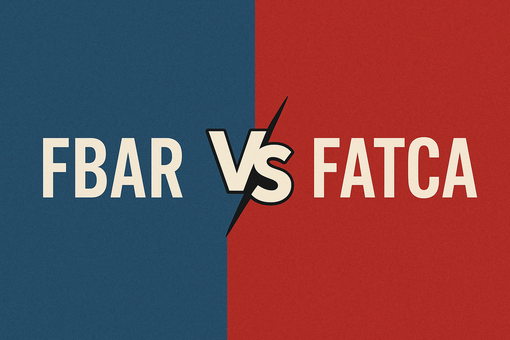Guide to Form 1098-T, Tuition Statement (what you need to know)

Are you a student or parent who has paid for college expenses this year?
If so, you may have heard of a tax form called the 1098-T.
This form is used to report information about qualified tuition and related expenses, as well as scholarships and grants, that may affect your tax liability.
In this article, we will explain what the 1098-T form is, who gets it and when, and how it affects your taxes.
What is Form 1098-T: Tuition Statement?
The 1098-T form serves as a statement of tuition and other expenses that are covered by approved educational institutions. It is a tax form that colleges and universities give to their students who spent money on eligible tuition and related expenses throughout the tax year.
These expenses might include the tuition, fees, and other associated costs - like books and supplies - that are necessary for enrolling in or attending an accredited educational institution.
The 1098-T form's goal is to assist students and their families in determining if they qualify for specific tax benefits related to education.
The form also asks for information on financial help received, including any scholarships or awards, as well as the amount of tuition and related costs that were paid.
It does not, however, mention details on lodging, travel, or other unqualified expenses.
Who gets 1098-T and when?
If you paid qualified tuition and/or related expenses during the tax year, your college or university is required to provide you with a 1098-T form by January 31st of the following year.
The form may be provided electronically (through the institution’s website) or in paper form, depending on your school's preferences and policies.
NOTE! Not all educational institutions are required to provide a 1098-T form. Institutions that do not participate in federal financial aid programs and do not have eligible students enrolled are not required to issue the form.
NB! The form is not provided to students who receive only non-taxable educational assistance, such as scholarships or grants that cover all of their tuition and related expenses.
How does Form 1098-T affect my taxes?
The information on the 1098-T may affect your tax liability in a number of ways.
The two main of them:
First, it may be used to determine if you are eligible for education-related tax credits, such as the American Opportunity Credit (AOTC) or the Lifetime Learning Credit (LLC).
These credits may reduce your tax liability and increase your refund, depending on your eligibility and the amount of qualified expenses you paid.
- The American Opportunity Credit enables qualified taxpayers to claim a credit for the first four years of post-secondary education up to $2,500 per student.
- The Lifetime Learning Credit allows eligible taxpayers to claim a credit of up to $2,000 per tax return for qualified tuition and related expenses paid for all students enrolled in eligible educational institutions.
Second, the information on the 1098-T form may be used to determine if any scholarships or grants you received during the tax year are taxable.
If the scholarships or grants exceed your qualified tuition and related expenses, the excess amount may be taxable as income.
However, if the scholarships or grants are used to pay for qualified expenses, they may not be taxable.
NOTE! Receiving a 1098-T form does not necessarily mean that a taxpayer is eligible for a tax credit or deduction. Eligibility depends on a variety of factors, such as income and the amount of qualified expenses paid.
Students should also be aware that the amount of tax credit they can claim may be limited by their income level.
For example, the AOTC is gradually phased out for single taxpayers with a modified adjusted gross income (MAGI) between $80,000 and $90,000, and for married taxpayers filing jointly with a MAGI between $160,000 and $180,000.
In addition, students who are claimed as dependents on someone else's tax return may not be eligible to claim certain education-related tax benefits.
Instructions on Form 1098-T (box by box)
So, when you get your 1098-T form, it's important to understand what's going on in each box.
Here's a breakdown of what you'll find in each Box and how it affects your taxes:
Box 1 - Payments received for qualified tuition and related expenses
Box 1 tells you the total amount of payments that the educational institution received for qualified tuition and related expenses during the tax year.
This means both the payments you made and any payments made by someone else, like your parent or employer.
But here's the thing: Box 1 doesn't include scholarships or grants that were used to pay for your tuition. So, if you got some free money to help with your education, it won't show up in this box.
Box 2 - Amounts billed for qualified tuition and related expenses
Box 2 shows the total amount of qualified tuition and related expenses that were billed to the student during the tax year.
This includes any tuition fees, required course materials, and other necessary expenses.
However, this box does not include any payments made by the student or a third party.
Box 3 - Change of reporting method
This box is checked if the educational institution changed its reporting method for the current tax year. This box is usually left blank.
Box 4 - Adjustments made for a prior year
Box 4 shows any adjustments that were made to the amounts reported in a prior year's Form 1098-T.
This box may be left blank, or it may show a negative amount if the educational institution refunded tuition or related expenses that were reported in a prior year.
Box 5 - scholarships or grants
Box 5 shows the total amount of scholarships or grants that were disbursed to the student during the tax year.
This includes any scholarships or grants that were applied towards the student's tuition or related expenses.
NOTE! Scholarships and grants may affect the eligibility for certain tax credits, such as the AOTC or LLC.
Box 6 - Adjustments to scholarships or grants for a prior year
Box 6 shows any adjustments that were made to the scholarships or grants reported in a prior year's 1098-T form.
This box may be left blank, or it may show a negative amount if the educational institution reduced the amount of scholarships or grants that were previously reported.
Box 7 - Check if Box 1 includes amounts for an academic period beginning January-March of the following year
Box 7 is checked if any payments for the current tax year were applied towards qualified tuition and related expenses for an academic period that begins between January and March of the following tax year.
This means that the amount reported in Box 1 may include payments for the next tax year.
Box 8 - Check if at least half-time student
Box 8 is checked if the student was enrolled at least half-time during any academic period that occurred during the tax year.
Being enrolled at least half-time may affect the eligibility for certain education-related tax benefits, such as the AOTC or LLC.
Box 9 - Check if a graduate student
Box 9 is checked if the student was enrolled in a graduate program or other post-baccalaureate program during any academic period that occurred during the tax year.
NOTE! Being enrolled in a graduate program may affect the eligibility for certain education-related tax benefits, such as the Lifetime Learning Credit.
Box 10 - Insurance contract reimbursements or refunds
Box 10 shows the total amount of reimbursements or refunds for qualified tuition and related expenses that were received from an insurance company during the tax year.
This box is typically left blank since most insurance policies do not cover qualified education expenses.
However, if the student did receive insurance reimbursements or refunds, this amount may need to be reported on the student's tax return.
Form 1098-T preview
NB! Ensure that the info provided in the Form 1098-T is accurate, as any errors may result in incorrect tax reporting. Also - keep a copy of the form for your records.
Pro tip: Form 1098-T is not the only form that may be needed to accurately report education-related expenses on a tax return. Students may also need to provide additional documentation such as receipts and bills to support their claims.
In addition, eligibility for education-related tax benefits is subject to certain income and other eligibility requirements.
Students should consult a qualified tax professional to ensure that they are accurately reporting their education-related expenses and claiming all eligible tax benefits.
Drowning in tax details?
Get your free tax consultation
FAQ
Reporting the 1098-T form depends on eligibility for education-related tax benefits. Consult a tax professional for guidance on qualifying for tax credits or deductions.
Refunds from a 1098-T form vary based on qualified education expenses, income, and eligibility for education-related tax benefits. Receiving a refund is not guaranteed.
The person who paid the qualified education expenses should claim the 1098-T. Parents can claim it if they paid for the expenses.
Not all students receive a 1098-T form. It's provided to those who paid qualified education expenses, and certain expenses like room and board aren't included.



